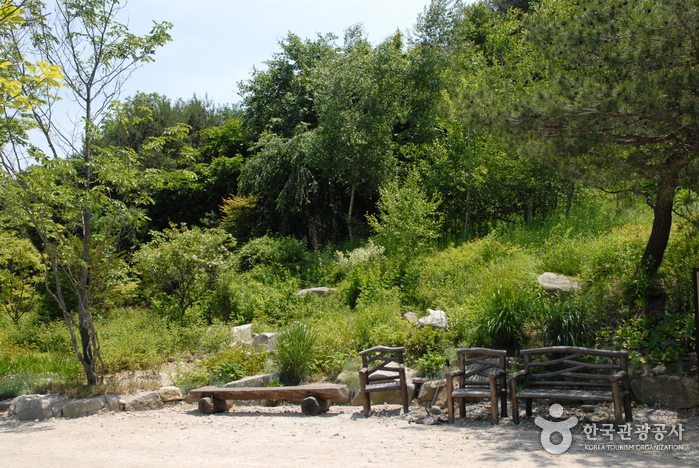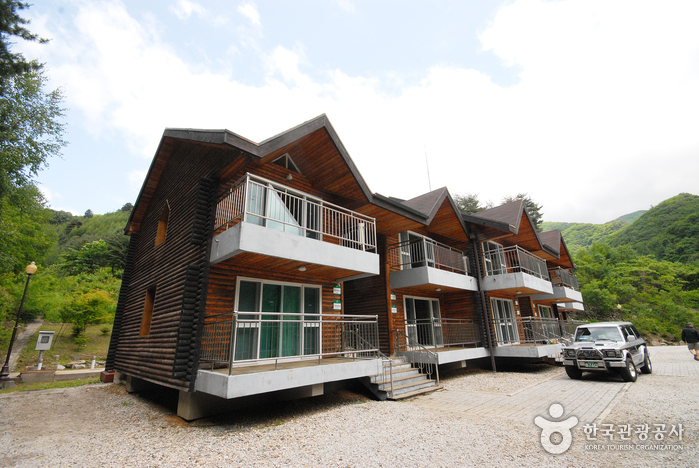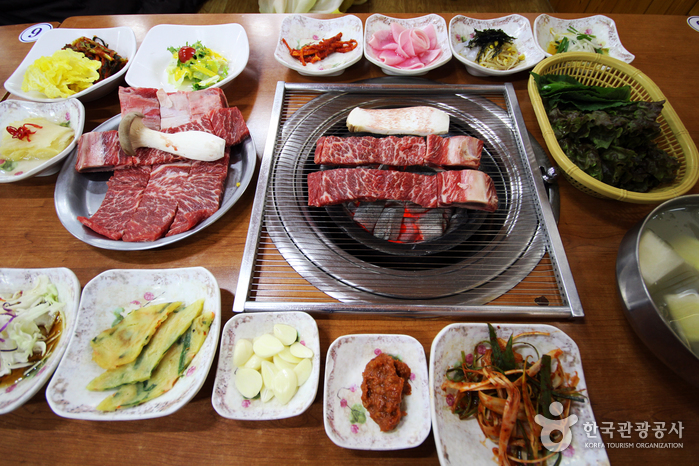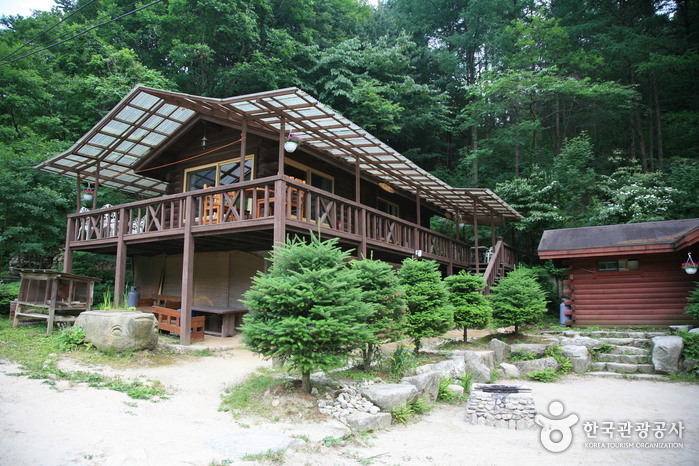Woljeong-ri Station (월정리역)
14.6 Km 20407 2019-09-26
1882, Durumi-ro, Cheorwon-gun, Gangwon-do
+82-33-450-5559
Woljeong-ri Station (Iron Triangle Battlefield) is the last stop before reaching the DMZ. With the sign "The iron horse wants to run again," there stand remains of a train that was used to make frequent trips to North Korea. Located at the spot where the fiercest battle was held during the Korean War, this train marks the partition line of the Korean peninsula. These days Woljeong-ri Station is under the control of the Cheorwon-gun Office and hundreds of thousands of people visit this unique tourist area every year.
Memorial Tower of Baengmagoji Battlefield and Memorial Museum (백마고지 위령비와 기념관)
14.6 Km 25836 2020-05-27
72, Daema 1-gil, Cheorwon-gun, Gangwon-do
+82-33-450-5559
Located in the northern area of South Korea, Baengmagoji Battlefield was one of the bloodiest battlefields during the Korean War. The communist Chinese army launched a major offensive attack for 10 days on October 6, 1952 during the Battle of Baengmagoji, which can be translated into the Battle of White Horse Highlands. Due to this battle, the communist Chinese army suffered around 14,000 casualties and the army completely collapsed while the 9th Infantry Division won the Battle of Baengmagoji and got the nickname “White Horse.”
After the battle, the area gave off a bad smell because of the dead bodies. The mountain area lost its original shape due to the severe battle and as a result the area was named “Baengmagoji” as it was said to resemble a white horse (baengma) lying down.
Pyunggang Botanical Garden (평강식물원)
15.4 Km 11612 2016-12-08
203, Umulmok-gil, Yeongbuk-myeon, Pocheon-si, Gyeonggi-do
+82-31-532-1779
Located at the entrance of Sanjeonghosu Lake, Pyunggang Botanical Garden opened in May 2006, and was designated as a habitat for preservation by the Ministry of Environment in 2009. The garden has on exhibit both native plants and species of plants from around the globe. Additionally, the garden features an exquisite collection of over 1,000 different alpine plants that normally reside on an altitude of 2,500 meters.
The scope of the garden is comprehensive, but it is divided into 12 themed areas, including a Rock Garden, where the largest alpine plants in Asia are concentrated; a Wetland Center, which mimics the natural ecology of a wetland region; a Pond Garden consisting of roughly 50 ponds lined with gorgeous flowers; a Moss Center where moss that grows in deep valleys and forests can be seen; and a Grass Square, which serves as a green common year round. The Pyunggang Botanical Garden, serves an important role in preserving rare plants, but is also creating a new botanical garden culture, and serving as a center for public ecological education.
Pocheon Baegungyegok Valley Dongjangkun Festival (포천 백운계곡 동장군축제)
16.5 Km 24879 2020-02-17
2381, Hwadong-ro, Pocheon-si, Gyeonggi-do
• 1330 Travel Hotline: +82-2-1330 (Korean, English, Japanese, Chinese) • For more info: +82-31-535-7242
The Pocheon Baegungyegok Valley Dongjanggun Festival is held in the area of Doridol Village, famous for I-dong galbi (ribs) and I-dong makgeolli (rice wine). During the festival, visitors can enjoy a vareity of tasty foods and fun hands-on winter experiences. Popular programs include ice fishing and sledding.
Bokjusan National Recreational Forest (국립 복주산자연휴양림)
16.6 Km 24785 2021-06-07
818, Haojae-ro, Cheorwon-gun, Gangwon-do
+82-33-458-9426
Bokjusan National Recreational Forest was officially designated as a national recreational forest in 1998. It is a home to a wide variety of flora and fauna, as well as numerous recreational facilities including two hiking routes (2.5 ㎞ and 1.5 ㎞) to the Bokjusan Mountain summit, Forest Recreation Center equipped with 10 guest rooms, and a campground.
Just 15 minutes by car from the forest is Maewoldae, where Joseon dynasty scholar and author Kim Si-Seup lived in seclusion. Maewoldae is surrounded by a lush forest with a deep valley, and also offers a magnificent view of Seonampokpo Falls at the foot of the mountain standing across. At the entrance of Maewoldae is the Cheongseokgol Outdoor Studio, where popular Korean TV dramas such as "Im KkokJong (1996)" and "Damo (2003)" were filmed.
Pocheon Idong Galbi Village (포천 이동갈비마을)
18.3 Km 26025 2022-10-26
2078, Hwadong-ro, Pocheon-si, Gyeonggi-do
+82-2-1330
Idong Galbi is a famous term for Koreans, representing the delicious hanu (Korean beef) short ribs that have been made with high quality meat and marinade. Nowadays, people can see signboards advertising Idong Galbi throughout Korea; however, the dish originated from Idong-myeon in Pocheon-si, Gyeonggi-do. Idong Galbi Village began with two stores in the early 1960s. They became famous and many more restaurants began to serve this local specialty.
Gungmangbong Recreational Forest (Pocheon) (국망봉자연휴양림 (포천))
19.9 Km 19787 2020-05-19
207-28, Neumbawi-gil, Pocheon-si, Gyeonggi-do
+82-10-2234-5522
Gungmangbong Recreational Forest is situated to the west of Sillobong Peak and Gukmangbong Peak. Within the recreation forest there are around 170 kinds of plants including nut pine trees, pine trees, and others. Visitors can enjoy with cool valley in summer and the beautiful snowy landscape of the mountains in winter.




 English
English
 한국어
한국어 日本語
日本語 中文(简体)
中文(简体) Deutsch
Deutsch Français
Français Español
Español Русский
Русский